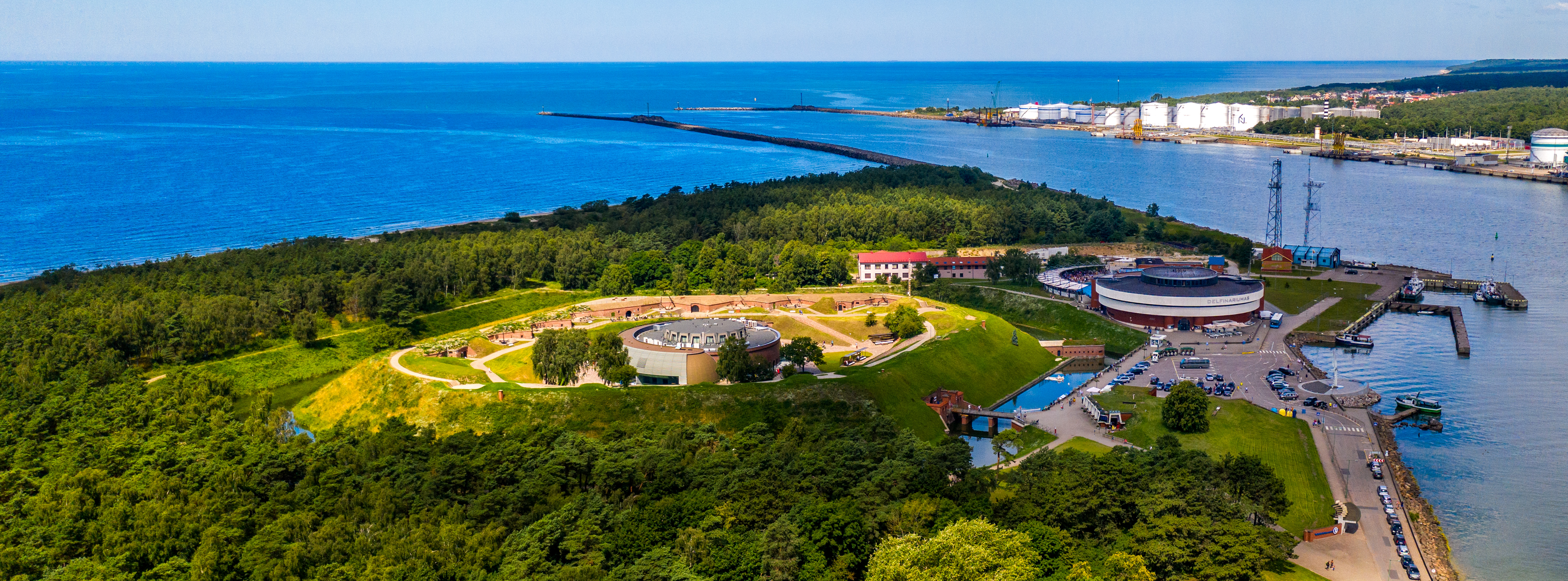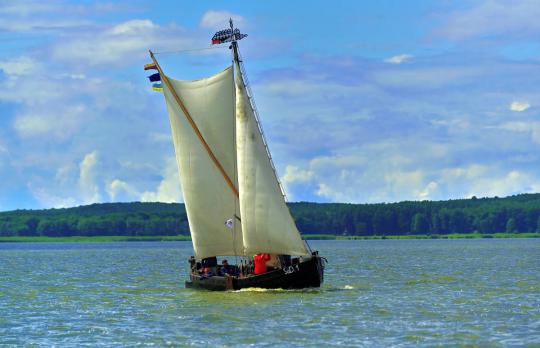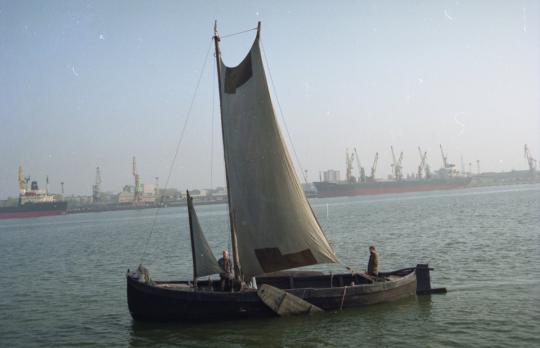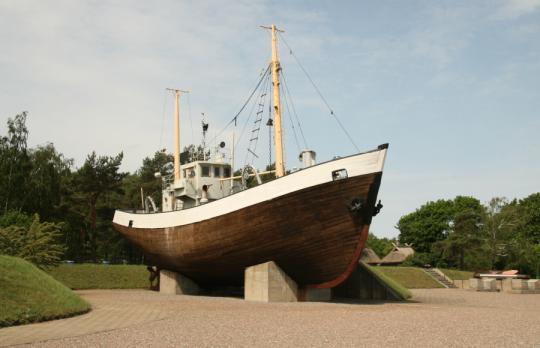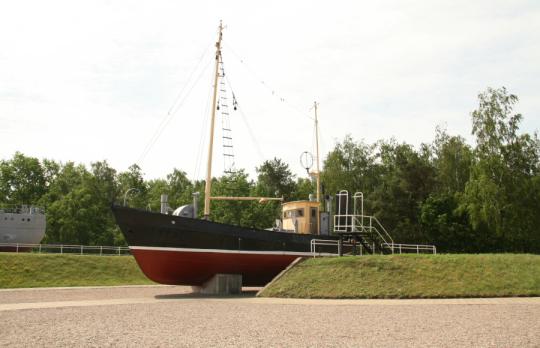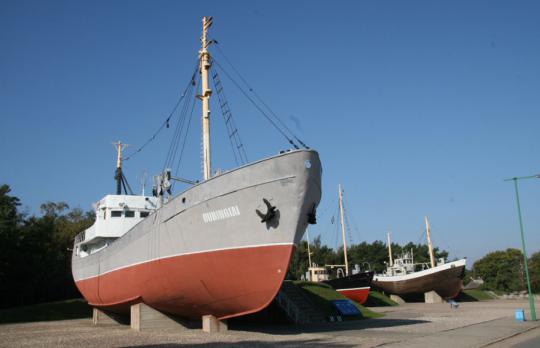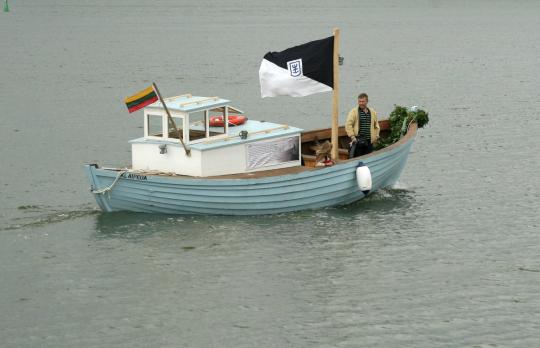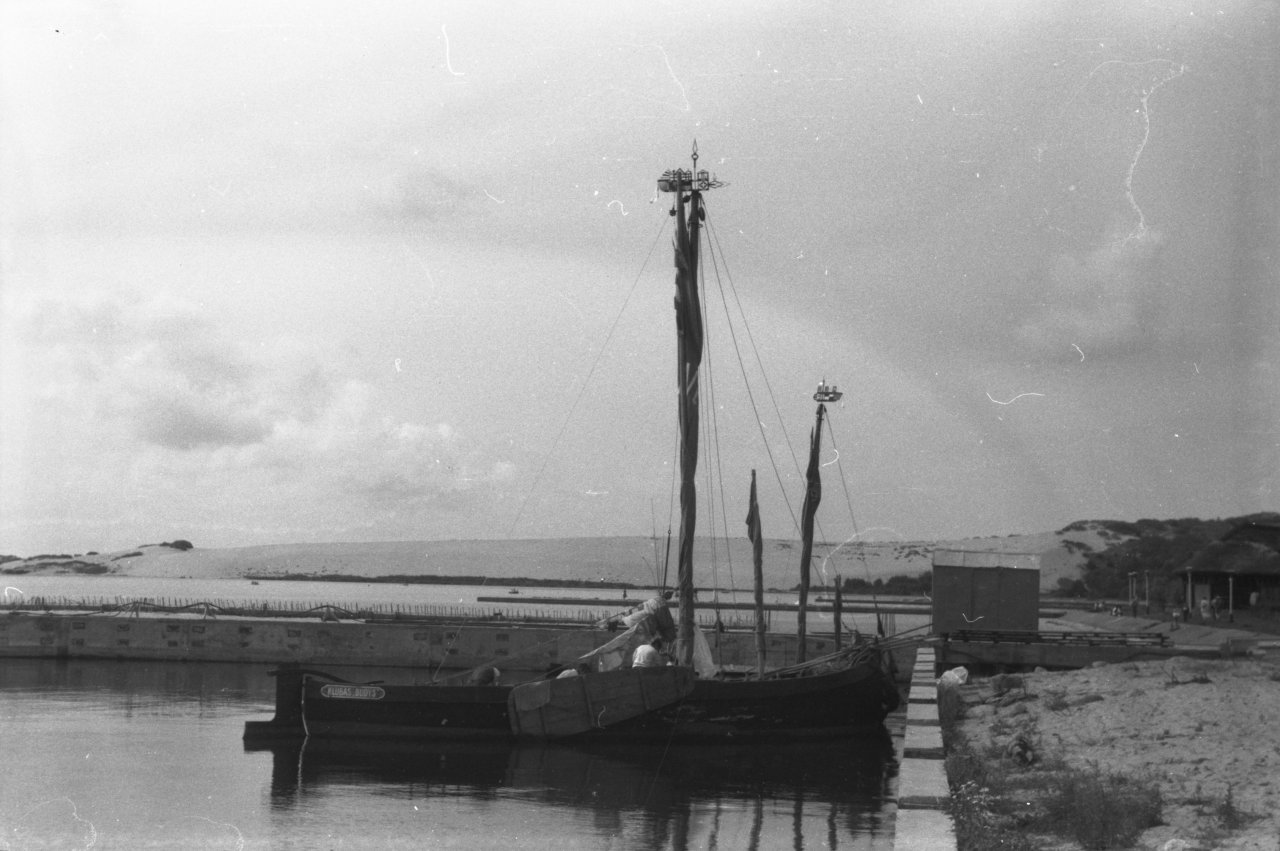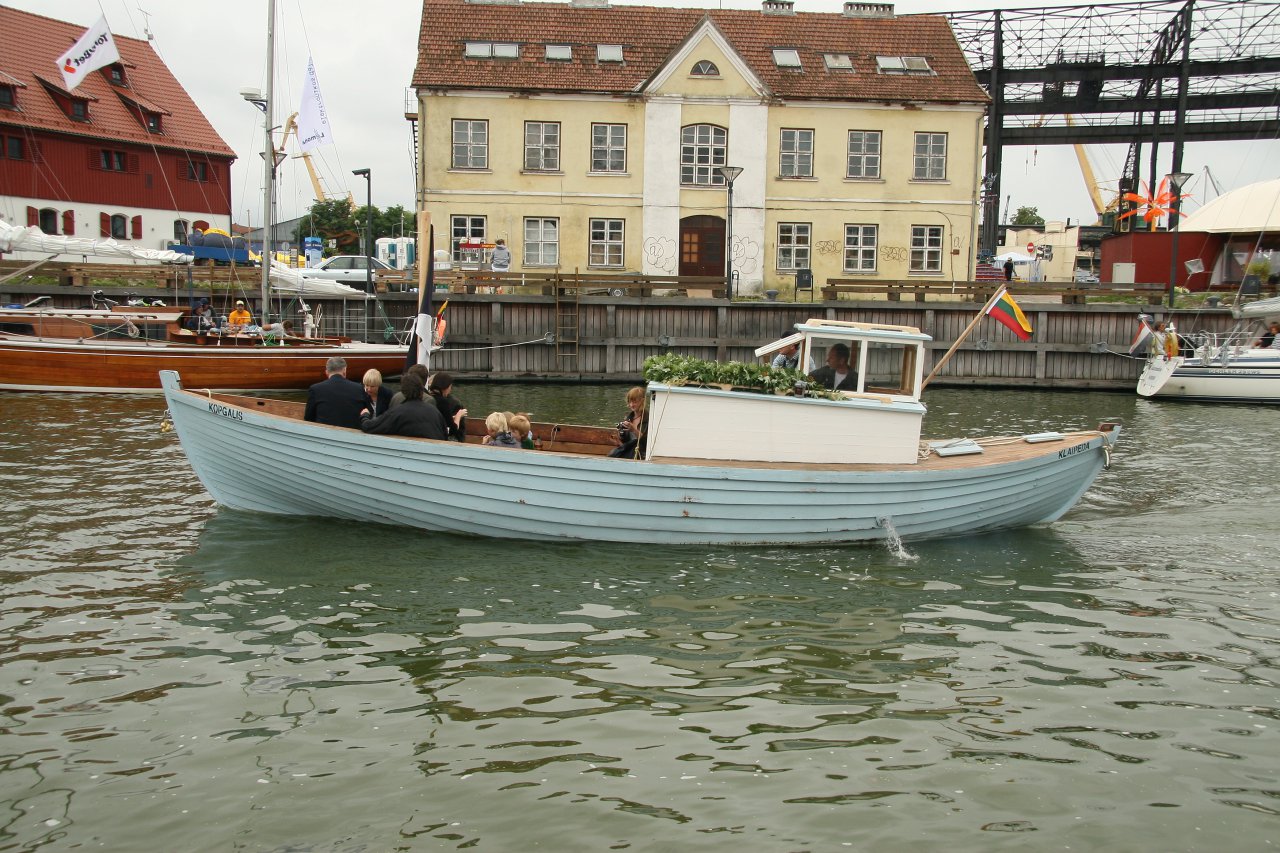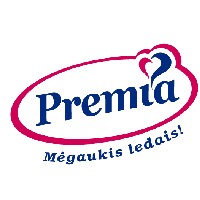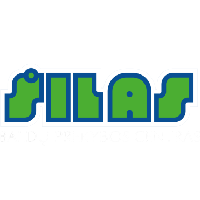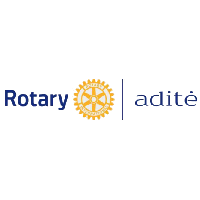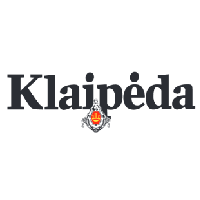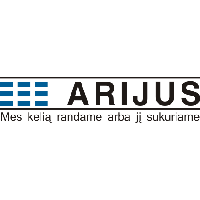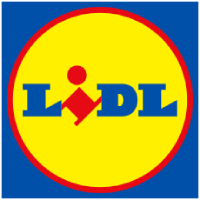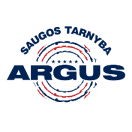Kurenas SÜD.1 is a sailing exhibit of the Lithuanian Sea Museum, a replica of a traditional fishermen boat – kurenas - built on a site in the yard of the ethnographic fisherman‘s farmstead of the Museum during 2000-2001. The replica SÜD 1 was built according to the sample of an original kurenas, using authentic methods and materials. Naturally bending oak wood was used for making the frame of the boat, the bottom was made of pine, while the sides of the boat were made of oak planks. Smith-made needs and pins join and stitch the assembling parts of kurenas. The boat has two masts for the main and the small sail, and a staysail in the fore. Kurenas also has stern post and stern post with four frames and is equipped with two drop keels,. The top of the mast is decorated with a weathervane. The name of the boat SÜD.1 means that it was the first boat built in the Süderspitze village.
Kurenas NID. 1 is a traditional flat-bottomed sailing boat of the Curonian Lagoon fishermen. The frame and stem of the boat were built of oak wood, the bottom – out of pine, and the board – out of oak planks. Kurenas has stern post and stern post with four frames, drop keels, and two small rooms at the front and back of the boat. The main mast, fixed to a firm beam, is decorated with a weathervane on the top. The boat was forwarded to the Museum by Latvian Etnography Museum in 1988. After restoration, kurenas NID. 1 was sailing in the Curonian Lagoon from 1989 to 1999.
Small trawler Kolyma-90 is the only survived ship with a metal frame and a wooden hull. The engine power – 200 AJ. Displacement – 162 tones. Crew- 11 members. Autonomic cruising – 100 days. The ship was delivered to the Soviet Union by Finland as a reparation after World War II. During the years of service she used to go trawling in the Baltic Sea and was assigned to the Baltic Fishery Fleet. In 1978 the ship was presented to the Museum by Neringa Fishing Farm.
Medium fishing trawler 3216 Dubingiai is the largest exhibit of the Lithuanian Sea Museum. The ship is the only one Bologoe type medium fishing trawler survived. Engine power - 400 AJ, cruising speed – 10,5 knots, full load displacement – 334 t . The ship was equipped with a cargo hold and net store with total capacity of 214 m3. Since 1967 she has been fishing by purse seine. Till 1980 used to go fishing in the Baltic Sea, the North Sea, the Norwegian Sea, and the Atlantic Ocean.
Displayed on the ground of old fishing ships since 1986, she also is equipped with an exhibition hall in the hold.
Dory was a motor-engine wooden boat used by fishermen in the Curonian Lagoon and the Baltic Sea during 1950–1975. Dory replaced traditional sailing fishing boats kurenas before dory was replaced by metal motor boats. Dory was built in a clinker way following the Scandinavian model. Its frame was made of oak wood and the sides of the planks of pine. Engine power – 30 hp.
Dory of the Lithuanian Sea Museum is the only boat type in Lithuania made under the Dore built in Kriukai village in 1950–1960.
